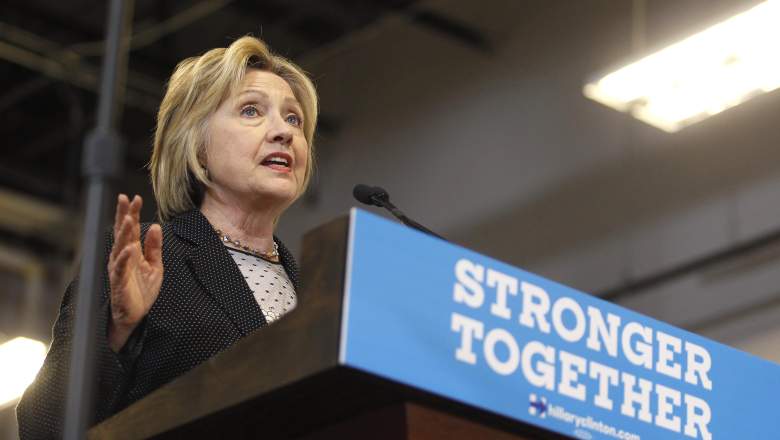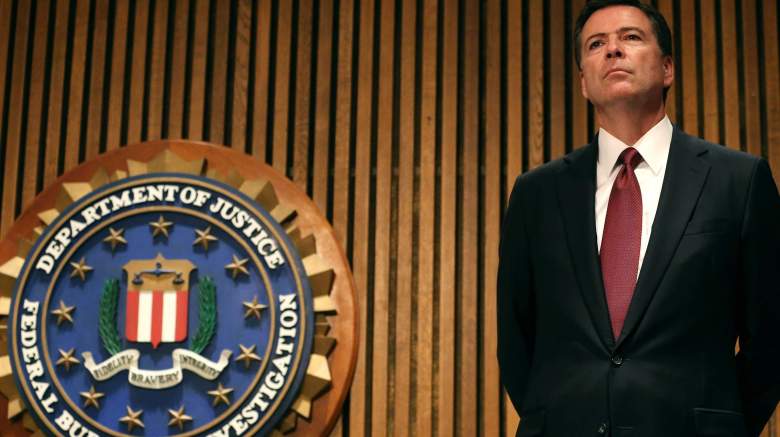FBI Director James Comey said July 5 that Hillary Clinton sent and received emails about matters that were classified. Specifically, he said:
For example, seven e-mail chains concern matters that were classified at the Top Secret/Special Access Program level when they were sent and received. These chains involved Secretary Clinton both sending e-mails about those matters and receiving e-mails from others about the same matters.
Contrast: Here’s Hillary Clinton herself has said in the past. She previously stated,
I did not email any classified material to anyone on my email. There is no classified material, so I am certainly well aware of the classification requirements, and did not send classified material.
Watch here:

(Photo by J.D. Pooley/Getty Images)
Comey announced Tuesday that the FBI will not be referring charges against Clinton for the email controversy. The U.S. Justice Department has the final say. In his statement, which you can read in full here, Comey said classified materials were found on Clinton’s server.

FBI Director James Comey participates in a news conference at FBI headquarters, June 23, 2014 in Washington, DC. (Getty)
Here are some of Comey’s statements on whether there was classified information on Hillary’s server:
From the group of 30,000 e-mails returned to the State Department, 110 e-mails in 52 e-mail chains have been determined by the owning agency to contain classified information at the time they were sent or received. Eight of those chains contained information that was Top Secret at the time they were sent; 36 chains contained Secret information at the time; and eight contained Confidential information, which is the lowest level of classification. Separate from those, about 2,000 additional e-mails were “up-classified” to make them Confidential; the information in those had not been classified at the time the e-mails were sent.
There is evidence to support a conclusion that any reasonable person in Secretary Clinton’s position, or in the position of those government employees with whom she was corresponding about these matters, should have known that an unclassified system was no place for that conversation.
In addition to this highly sensitive information, we also found information that was properly classified as Secret by the U.S. Intelligence Community at the time it was discussed on e-mail (that is, excluding the later “up-classified” e-mails).
None of these e-mails should have been on any kind of unclassified system, but their presence is especially concerning because all of these e-mails were housed on unclassified personal servers not even supported by full-time security staff, like those found at Departments and Agencies of the U.S. Government—or even with a commercial service like Gmail.
Separately, it is important to say something about the marking of classified information. Only a very small number of the e-mails containing classified information bore markings indicating the presence of classified information. But even if information is not marked “classified” in an e-mail, participants who know or should know that the subject matter is classified are still obligated to protect it.